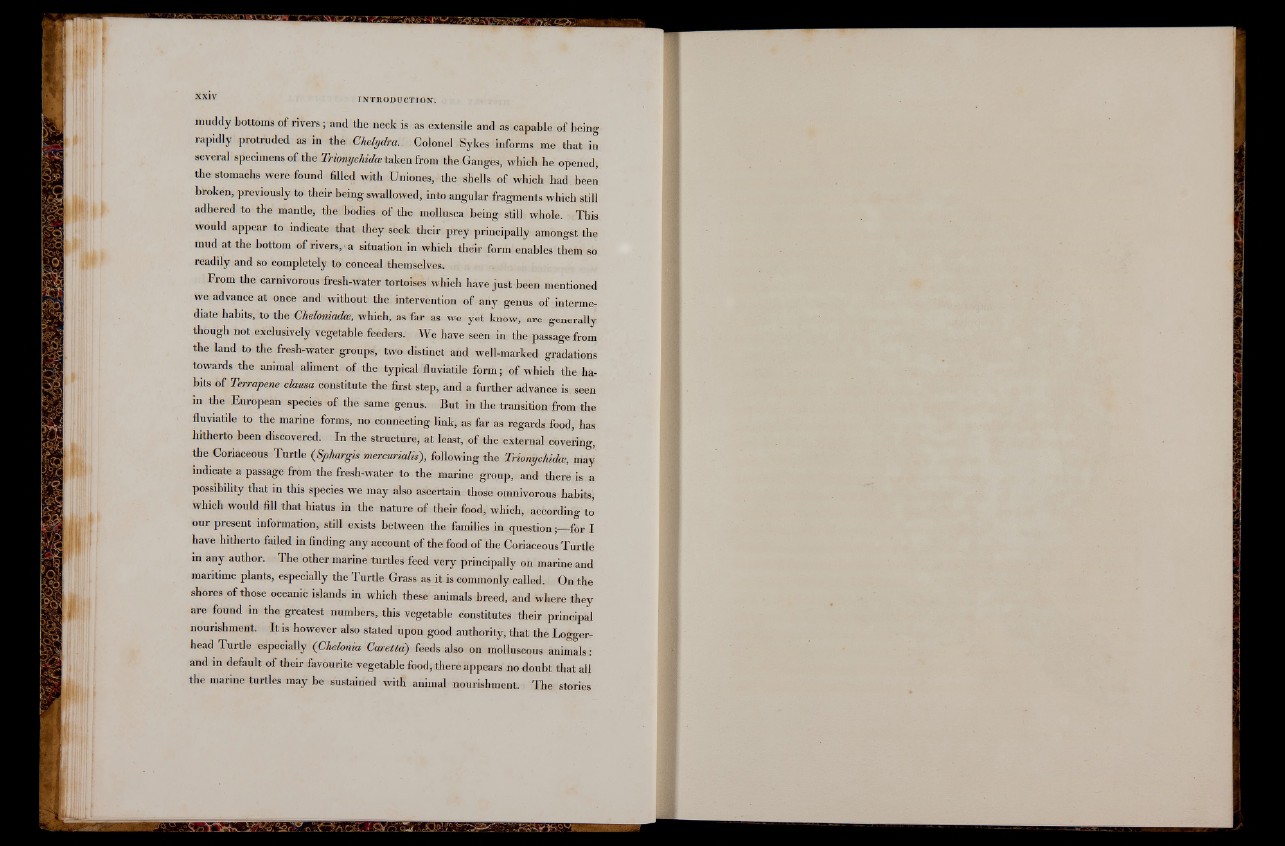
muddy bottoms of rivers; and the neck is as extensile and as capable of being
rapidly protruded as in the Chelydra.. Colonel,Sykes; informs me that in
several specimens of the Trionychidce taken from the Ganges, which he opened,
the stomachs were found filled with Uniones, the shells of which had been
broken, previously to their being swallowed, into angular fragments which still
adhered to the mantle, the bodies of the mollusca being still whole. This
would appear to indicate that they seek their prey principally amongst the
mud at the bottom of rivers, , a situation in which their form enables them so
readily and so completely to conceal themselves.
From the carnivorous fresh-water tortoises which have just been mentioned
we advance at once and without the intervention of any genus of intermediate
habits, to the Cheloniadce, which, as far as we yet know, are generally
though not exclusively vegetable feeders. We have seen in the passage from
the land to the fresh-water groups, two distinct and well-marked gradations
towards the animal aliment of the typical fluviatilfe form; of which the habits
of Terrapene clausa constitute the first step, and a further advance is seen
m the European species of the same genus. But in the transition from the
fluviatile to the marine forms, no connecting link, as far as regards food, has
hitherto been discovered. In the structure, at least, of the external covering,
the Coriaceous Turtle (Sphargis mercurialis'), following the Trionychidce, may
indicate a passage from the fresh-water to the marine group, and there is a
possibility that in this species we may also ascertain those omnivorous habits,
which would fill that hiatus in the nature of their food, which, according to
our present information, still exists between the families in q u e s tio n fo r I
have hitherto failed in finding any account of the food of the Coriaceous Turtle
in any author. The other marine turtles feed very principally on marine and
maritime plants, especially the Turtle Grass as it is commonly called. On the
shores of those oceanic islands in which these animals breed, and where they
are found m the greatest numbers, this vegetable constitutes their principal
nourishment. It is however also stated upon good authority, that the Loggerhead
Turtle especially (Chelonia Caretta) feeds also on molluscous animals:
and in default of their favourite vegetable food, there appears no doubt that all
the marine turtles may be sustained with animal nourishment. The stories